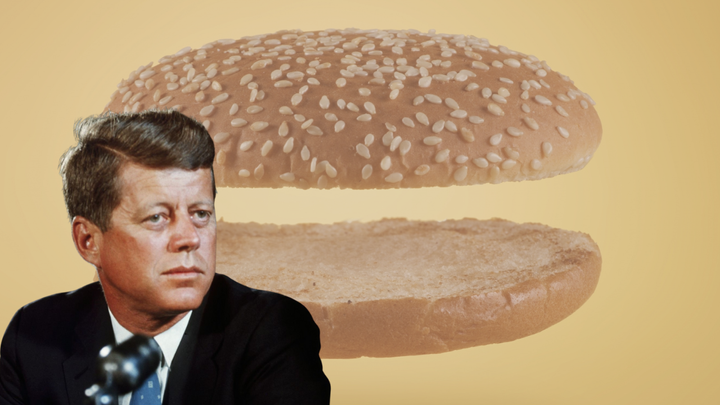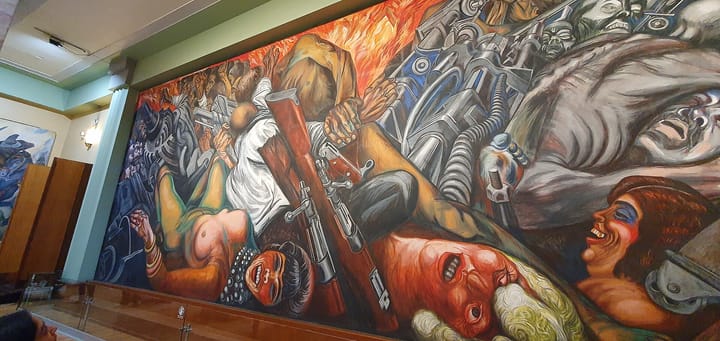Saga of the Week: The epic TV miniseries of the 1970s.
In the late 1970s, the world came to a screeching halt when the latest epic miniseries came on network TV.

I was a late adopter of the streaming revolution, and I was still getting DVDs in the mail from Netflix back in 2015. I remember in the fall of that year I got a disc that had been on my list for several months: the first two parts of an old TV miniseries called Centennial, based on the novel by James A. Michener. Though I don't remember much about the series, I certainly remember when it was on. For many nights back in 1978 and 1979 my parents, and especially my father, were absolutely glued to it. I recalled that it was some sort of historical epic involving the settlement of the West. I worked my way through the first episode and didn't get farther than that. Though in its way it was a well-made film, in other ways it was pretty laughable, especially the bizarrely inappropriate casting, like Robert Conrad as a Quebecois fur trapper and Richard Chamberlain as a Scotsman with very unruly hair. Still, it was interesting to see this glimpse of what was once an epic event on television in the 1970s, and in its curious way a genre of its own.
Nowadays, in the era of niche cable channels and video-on-demand, the word "miniseries" doesn't have the same meaning it had back in the 1970s and especially the 1980s, the heyday of the genre. Back in 1978, when Centennial aired, a miniseries was a huge family event. A lengthy movie of a few or perhaps numerous episodes—Centennial, one of the longest, had twelve—would be broadcast in prime-time over numerous nights, usually a week but sometimes longer. The episodes would fit into the networks' "movie of the week" or "nightly movie" slots and usually command significantly higher advertising revenue than other shows, because the networks knew everybody would stop what they were doing and watch the whole thing. I remember in our house when Centennial (or later Shogun) came on, everything in our home literally came to a halt. Dinner had to be over, homework finished, chores done, and phone calls would be unanswered—we were watching Centennial, and nothing short of a nuclear alert could snap our family out of it!
The miniseries as it came to be got its start in 1974. In the spring of that year ABC aired a 6 1/2 hour movie over three parts, QB VII, a World War II-themed courtroom drama based on the lengthy 1970 novel by Leon Uris. The film starred Ben Gazzara and Anthony Hopkins. Just the day before QB VII began airing, Canada's CBC television finished showing an 8-part series called The National Dream, about the building of the Canadian-Pacific railway. Both series got huge ratings and interested other networks in the format. These two pioneering efforts cemented the usual characteristics of miniseries: they had to be very long, based on best-selling novels (usually some sort of historical fiction), and have a lot of small speaking roles that could be given to big stars who could collectively build an "all-star cast." That the roles were small was very important, because guest stars could shoot their parts in one or a couple of days and not have to commit to the usual lengthy production schedule of a major theatrical movie or TV series.
The apotheosis of the 1970s TV miniseries—and a major event in American cultural history, in fact—came in January 1977 with the airing of Roots on ABC. Roots was based on the controversial 1976 novel by Alex Haley which attempted to show the institution of American slavery through the eyes of Africans and African-Americans, by focusing on several generations of a slave family. The controversy came from Haley's claim, later refuted in court, that the book was based on his genealogical research on his own family—in fact many parts of his novel were lifted from Harold Courlander's 1967 book The African. The Roots miniseries was a staggering blockbuster, steadily sucking up millions of additional viewers over the eight consecutive nights it ran until by its final episode, on January 30, 1977 it became the third most-viewed television broadcast in world history. The series was groundbreaking in its portrayal of Black history and the deep reach it had into the African-American film and theater world, featuring stars like Ben Vereen, Olivia Cole, Scatman Crothers, Richard Roundtree, Louis Gossett, Jr. and the very young LeVar Burton, later famous for Star Trek: The Next Generation (and everyone’s choice for the new Jeopardy! host, except the producers’), as Kunta-Kinte. Every time Roots has been rebroadcast or released on video it's gone similarly gangbusters. It was followed by its own sequel miniseries in 1979 and a remake was done in 2016, though it did not have the impact of the original. Roots was produced by legendary impresario David L. Wolper, whose name seemed to be on every one of these epics from the '70s.
After Roots the networks eagerly entered into a sort of apocalyptic arms race of epic miniseries, snatching up the rights to lengthy bestsellers—the verbose "airport fiction" writers James Michener, Arthur Hailey and John Jakes were uniquely well-suited for this—and emitting ever-vaster rivers of cash to mount lavish productions that would outdo their rivals. Centennial was an incredible 26 1/2 hours long and cost NBC $25 million, roughly the equivalent of $100 million in 2022 dollars. As for stars, they didn't really seem to care if they were right for the part or not, which is how we got M*A*S*H alum Sally Kellerman as a German immigrant's daughter and Donald Pleasance (Dr. Loomis from Halloween and Blofeld from James Bond) as a mountain man. These series also tended toward culturally and racially insensitive casting. Centennial was a particular offender in this category, with virtually all of the Native American characters portrayed by non-Natives, including Michael Ansara (of Lebanese extraction) and Barbara Carrera (Nicaraguan).
No historical era or event was immune from miniseries treatment. The Holocaust and Pearl Harbor were both "done" in miniseries format, the latter in a slap-dash production called Pearl that cribbed the attack footage from the 1970 theatrical film Tora! Tora! Tora! (It did manage to beat The Star Wars Holiday Special, which aired the same night in 1978, handily in ratings). Goings-on at the White House were featured twice in 1979 miniseries, first in Backstairs at the White House about the servants at the executive mansion, then Watergate in Blind Ambition starring Rip Torn as Richard Nixon. Wherever these miniseries went they tended to drag a trail of Emmy and Golden Globe awards behind them.
Alas, the era of the big miniseries as they were in the 1970s is totally over. With the proliferation of cable and video services, TV entertainment has been atomized into a broad but shallow universe of niche interests, and broadcast networks can't command anything close to the audiences they could 45 years ago. The economics of TV are now much different as well, making it unlikely that anyone is going to spend $100 million on a series that will only run for a few nights and not continue for years or spawn significant long-term spinoffs or sequels, or big grosses in the Chinese market. Even the fiction on which these shows used to be based isn't really there anymore in the same way. James Michener died in 1997, and the genre of "airport novels" has given way to a much more fractious universe of genre fiction often sold on e-readers (like the kind of stuff I write). While we do have plenty of wonderful modern shows like The Queen’s Gambit, the epic miniseries as it existed 45 years ago is now as extinct as the dinosaurs—but the memories remain.
I will do another article in the future about the genre of the miniseries as it reached its apotheosis in the next decade, the 1980s.
The header image was made by me and incorporates a public domain photograph. I am not the uploader of any of the YouTube clips embedded here.
The Value Proposition
Why should you be reading this blog, or receiving it as a newsletter? This is why.



Comments ()